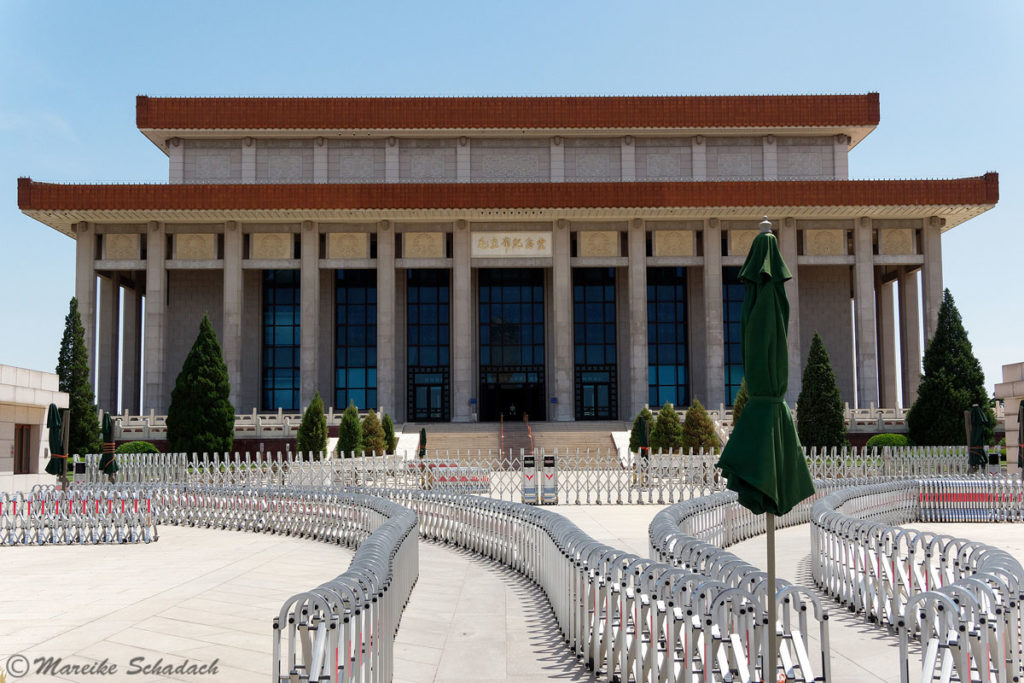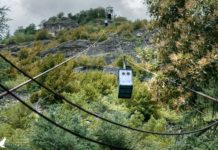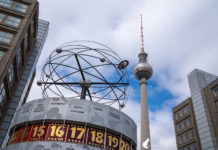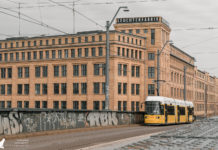China. Every day at sunrise, the Chinese flag is solemnly hoisted at Tiananmen Square. It is also solemnly lowered at sunset. Spectators crowd in front of the barriers, because everyone wants to see the flag ceremony on Tiananmen Square up close. Children sit on their parents' shoulders waving their own Chinese flags. During the ceremony, the parents and everyone else raise their smartphones and cameras for a photo. I took a few pictures of the flag ceremony myself. So in the following article you can't get an impression of a Chinese spectacle at a somewhat different pilgrimage site.
Unassigned, unpaid advertising. The article contains affiliate links.
Flag Ceremony
The flag ceremony was introduced only after the bloody suppression of the protests for more democracy in June 1989. Travel guides describe the spectacle as a "must see". Chinese tourists in particular make a regular pilgrimage to the ceremony. But nobody remembers the victims of the protests. On the contrary. The ceremony is held in honour of the communist People's Republic of China.

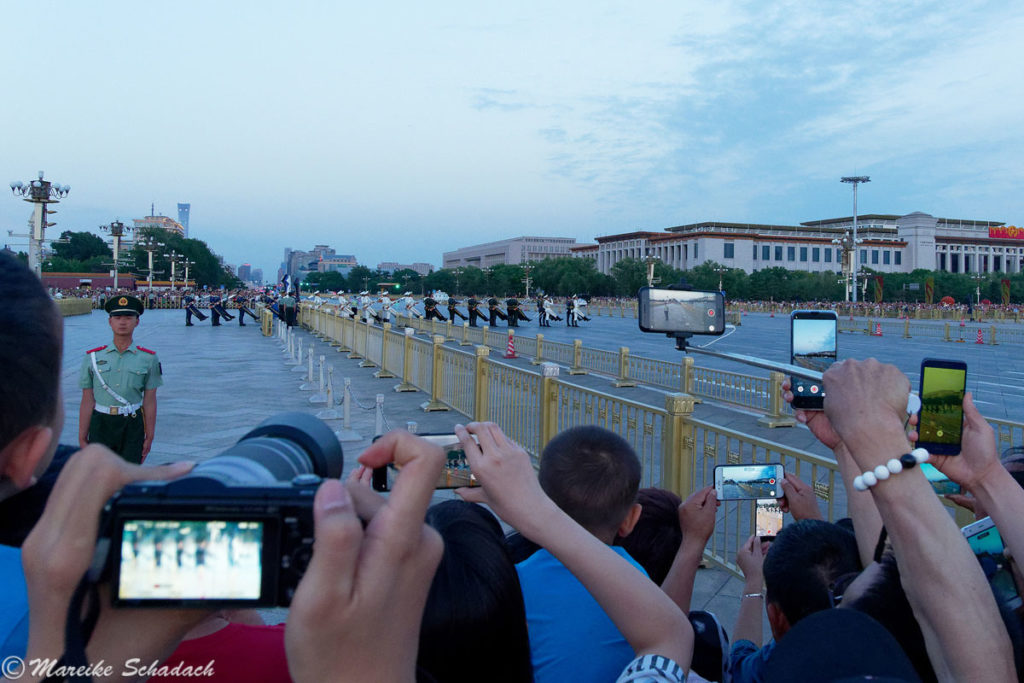
At the flag ceremony on Tiananmen Square, soldiers of the People's Liberation Army hoist the Chinese flag in front of the Gate of Heavenly Peace. In the evening, at sunset, they march up again to lower the flag.
The crowd was impressive. So many gathered to watch the flag being lowered. Everything was locked in front of the Gate of Heavenly Peace. There was no getting through here. Several guards and the omnipresent video cameras had everything in view and paid attention. Everyone wanted to get as close as possible to the barriers in order to have a clear view of the ritual lowering of the Chinese flag at Tiananmen Square with their own eyes or with a smartphone. And the Mao portrait, which floats over the people at the Gate of Heavenly Peace, watched over everything. Want to learn more about the Mao Portrait? Then read on here .
Waiting for the flag to be lowered made up most of the spectacle. The actual ceremony, however, from the marching of the soldiers to the lowering of the flag to the departure, was only about ten minutes.



Tip: When exactly the sunrise or sunset is, you can see on the website Sunrise-Sunset when the bridge opens its lane for ships.
Do you need a break from the big city and want to get some fresh air? Then I can warmly recommend a tr ip to the Great Wall of China near Jiankou. Here you can read my article about a selfguided Hiking Tour on the Wall from Jiankou to Mutianyu.
The Chinese Flag in China
The Chinese flag plays an important role throughout the country. It is present everywhere, there is hardly a field of vision without it. During my trip I had the impression that it is shown particularly frequently in the Chinese occupied Tibet. Even more than in the capital Beijing. Almost every house wore it and many street lamps were decorated with two flags each. The Tibetan flag was not seen anywhere. Because it is forbidden by the Chinese government to show it or even to hoist it. In the souvenir shops in Tibet there were not even refrigerator magnets with the Tibetan flag to buy.
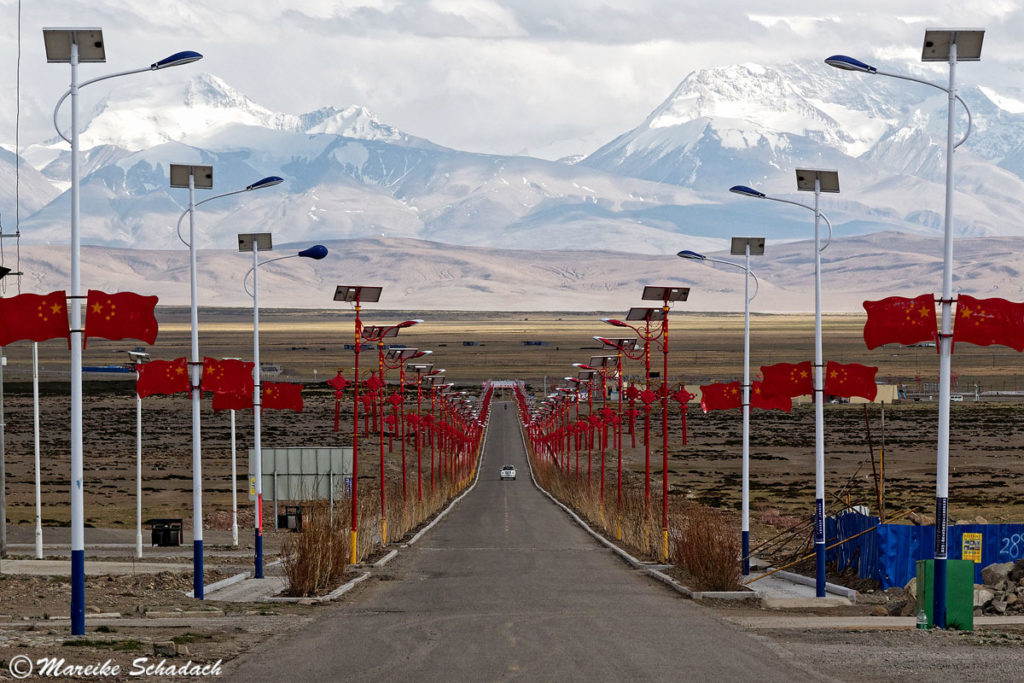

Something else worth knowing:
What do the Stars on the Chinese Flag mean?
The Chinese flag with the 5 stars on a red background has existed since 1949. Red is a lucky colour in China and at the same time the colour of the Han Chinese. The big star stands for the communist party of China. The four small stars symbolize the four social classes in China: workers, peasants, petty bourgeoisie and the bourgeoisie.
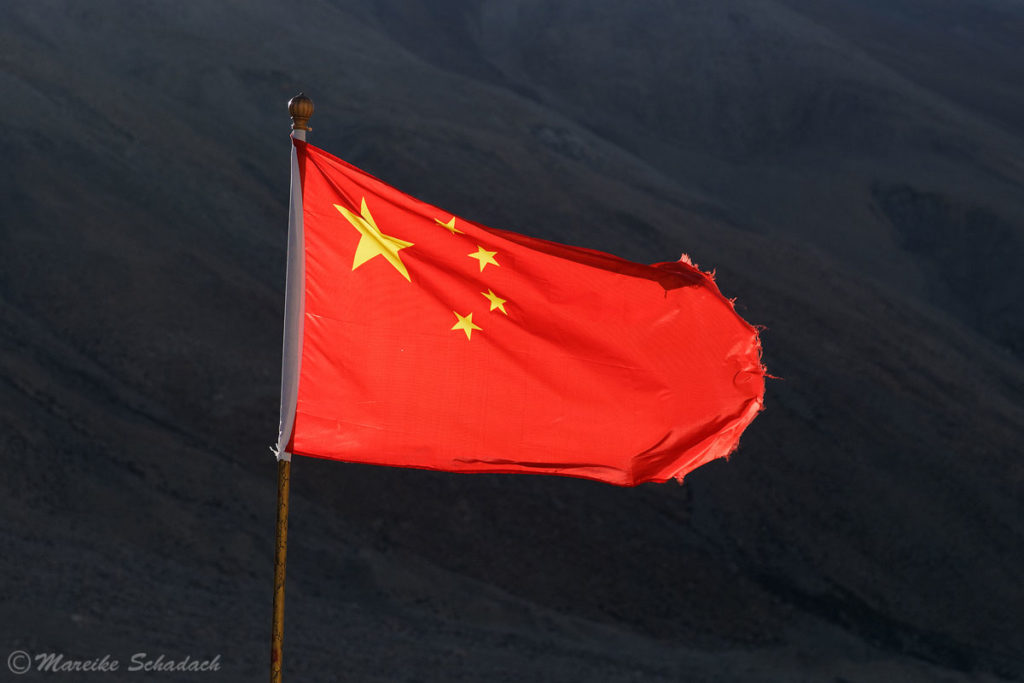
And what do the Elements on the Tibetan Flag mean?
The elements of the colorful Tibetan flag were first created under King Songtsen Gampo in the 7th century. However, the flag was first used as a military flag. Only after the 1959 uprising was it also used as a national flag. Today the Tibetan flag may neither be possessed nor shown in Tibet. However, it is used by the Tibetan government in exile. The white mountain Kailash is depicted in the middle below as a symbol of the nation. From the middle six red sunrays go up to the edge. These symbolize the six Tibetan tribes. Blue, on the other hand, stands for the interplay of religious and secular rule. The two golden snow lions represent the form of government based on Buddhist principles. Furthermore, the golden border means the Buddhist teaching and the jewel stands for the three jewels Buddha, Dharma and Sangha.
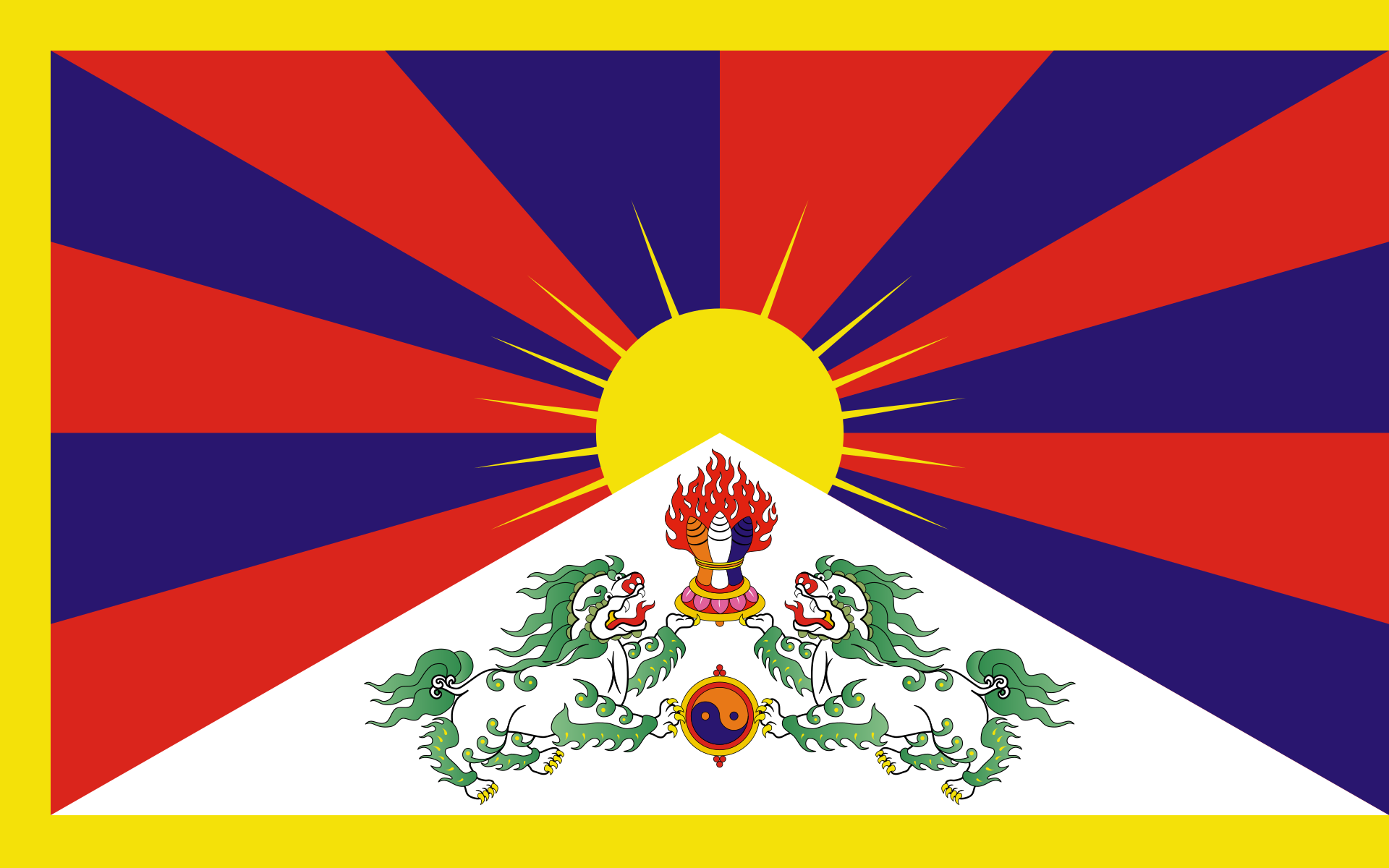
Book Recommendations for China
You want to know where the journey goes? Then I can recommend these books* about China.
You can order these books at Amazon with a click on the pictures. If you buy a product via one of these affiliate links, I get a small commission and you help me to keep filling Fernweh-Motive with interesting articles. The product will not be more expensive for you.
Have you ever been to Beijing yourself and watched the flag ceremony? How did you like it? Do you have any questions about my article or any other suggestions? If so, please write me a comment!
Do you want to know when there are new articles on my blog? Then follow me on Facebook, Pinterest or Instagram. I would also be very happy if you share my article with your friends.




